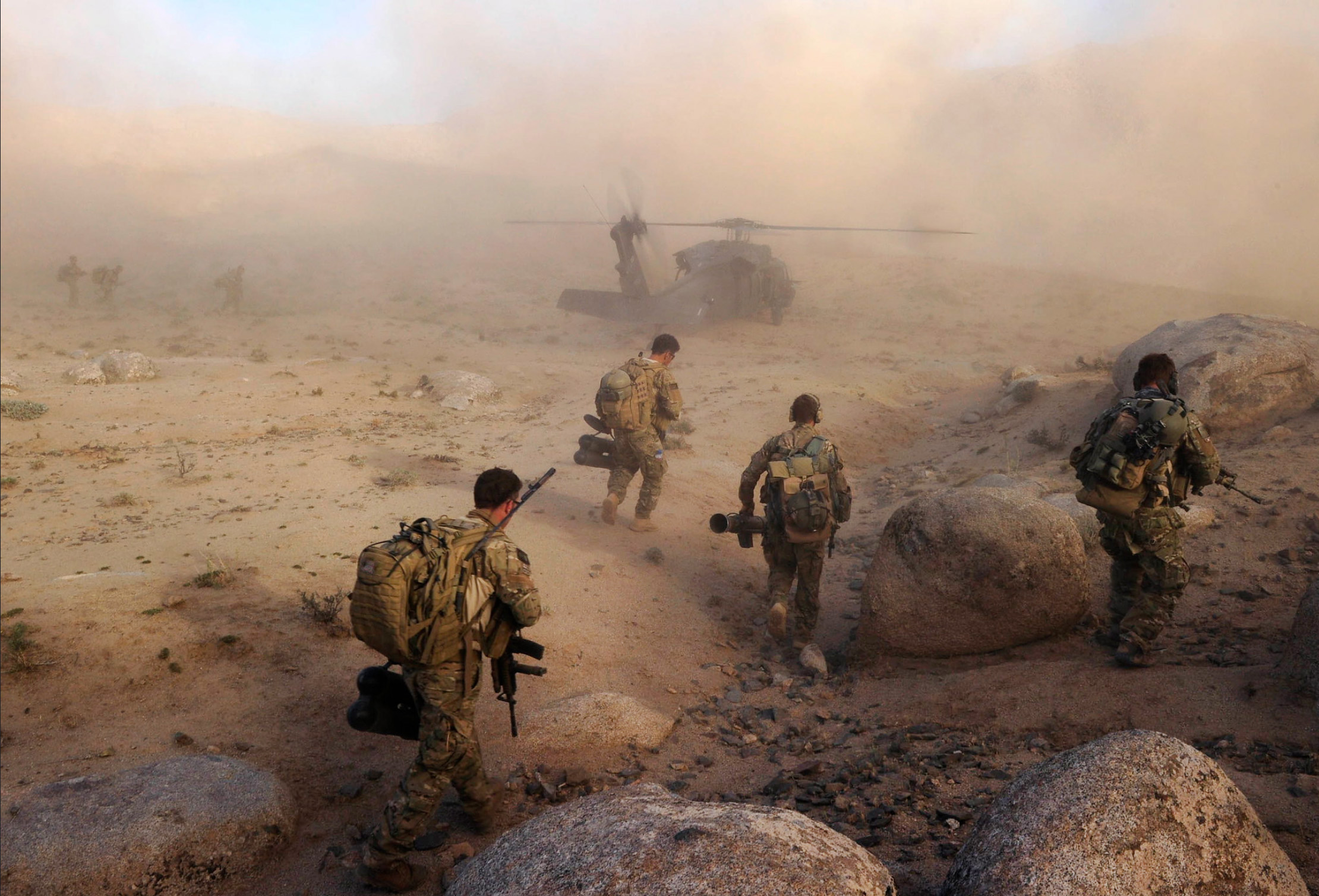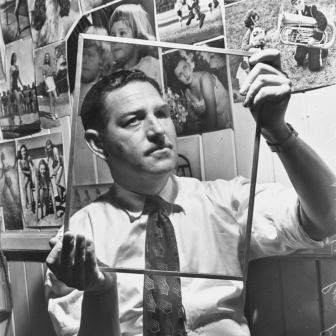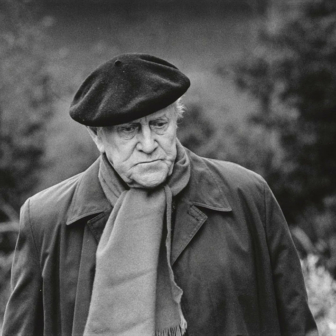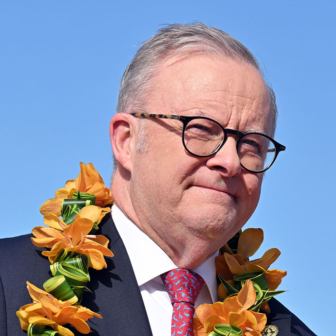In June 2010 an Australian special forces unit stumbled into an intense fight with a vastly larger force of Taliban insurgents. The battle would become the most significant in Australia’s twenty-year engagement in Afghanistan, and trigger a series of events that would seriously damage the reputation of the Special Air Services Regiment and ruin that of its most famous member.
Operation Hamkari was a concerted effort by Australian and Afghan government forces, backed by US air power, to break a Taliban stronghold northeast of Kandahar and end a long-running security threat to Afghanistan’s second largest city.
The operation began when soldiers from Australia’s 2nd Commando Regiment launched an initial raid on the village of Chenartu, seventy-five kilometres from Kandahar, forcing Taliban fighters to retreat. The next morning, four US Black Hawk helicopters descended at dawn on the nearby village of Tizak, carrying twenty-five SAS troopers and additional Afghan soldiers.
According to the official account, the Australians came under heavy fire from the moment they landed at the edge of Tizak. It would later be estimated that they faced more than one hundred Taliban, including some of the enemy’s most experienced and tenacious fighters.
As the Australians desperately sought shelter, they were strafed by machine guns positioned on nearby higher ground and fire from snipers with AK-47s. Under cover of protective fire from armoured Apache helicopters hovering above, three of the Australians managed to get within forty metres of a mud-walled compound later identified as a mosque.
Now too close to the compound to be helped by the helicopters, the trio began to crawl through the dirt, one taking turns to shoot back while the others scrambled forward on their elbows towards the mosque, each convinced that they might be killed at any moment. “I had an absolute feeling of dread and fear due to the amount of fire that we were receiving,” Trooper Justin Percy later recounted. “And that is not only accurate fire but sustained, effective fire.”
A corporal accompanying Percy then made a bold decision to break the deadly standoff, a decision author Aaron Patrick says turned him into the most famous Australian soldier alive: “It might have killed him. Instead, it ruined his life.”
With covering fire from Percy, Ben Roberts-Smith dashed towards an empty barn to be confronted by a Taliban fighter pointing a grenade launcher through a window. After shooting the Taliban, Roberts-Smith saw two more fighters with machine guns moving along the wall of the mosque courtyard firing towards him. He threw a grenade that failed to detonate.
As Sergeant Philip O’Connor and two other troopers rushed forward to join him, O’Connor thew another grenade. This one worked but failed to silence the machine guns. Roberts-Smith then charged toward the courtyard wall, shooting one of the machine gunners twice through the head as he was turning to fire at him. The Australian then entered the courtyard to find a second machine gunner, a boy he reckoned was only fifteen. “I just moved a little further along the wall, dropped down and killed him as well,” he would recall.
Moments later, Roberts-Smith burst into the mosque with two other Australians and shot another armed Taliban. Entering a small room to his left, he faced yet another insurgent standing with a rifle and ammunition pouches. This time his Mk 14 battle rifle jammed. As Roberts-Smith sidestepped to distract the Talib, Justin Percy fired three rounds, killing him instantly.
The confrontation — which became known as the Battle of Shah Wali Kot — was the turning point in a battle that might easily have ended in disaster for the Australians.
Patrick provides a gripping reconstruction of that confrontation in his new book, The Last Battle. Yet although the Australian army considers it the greatest victory in its longest war, he writes, few Australians have ever heard of it. This alone would seem ample reason for Patrick’s meticulous reconstruction of the events based on extensive interviews with many of those who were there. But that was not the journalist’s sole motivation, perhaps not even the primary one.
For his actions at Tizak, Ben Roberts-Smith was awarded the Victoria Cross, the highest and most venerated award available to a member of the Australian military. Fifteen years on, that medal is indelibly stained. In June 2023, Judge Anthony Besanko of the NSW Supreme Court found that Roberts-Smith had committed or was complicit in the murder of four Afghan prisoners (in actions separate from the Battle of Shah Wali Kot). The case was a defamation action brought by Roberts-Smith against Fairfax newspapers and journalists Chris Masters and Nick McKenzie, whose reporting had first revealed alleged war crimes in Afghanistan.
In May this year, the Full Court of the Federal Court rejected an appeal brought by Roberts-Smith against the Besanko judgement, unanimously dismissing all sixteen grounds. The verdict of the three judges was damning: “The burden of proving that his honour [Besanko] erred on appeal rested with the appellant. The appellant has not discharged that burden. What is more, we are satisfied that his honour’s conclusions with respect to the substantial truth of the relevant imputations conveyed by the respondents’ articles were correct.”
Early last month, the High Court slammed the final door on Roberts-Smith’s legal efforts to clear his name when it rejected a special leave application for him to challenge the Federal Court decisions. This emphatic conclusion to the disgraced soldier’s seven-year legal crusade against his accusers might have convinced most observers of the sordid saga that enough was more enough on the matter of Ben Roberts-Smith and his VC. But not Aaron Patrick.
In a post on LinkedIn earlier this month, Patrick declared: “If you’re interested in learning what the former SAS soldier did to deserve the medal, this book is for you. But The Last Battle is about a lot more than him. Some 150 Australian soldiers directly participated. His story is important. So are the other soldiers. I hope my book can help Australians better understand how our men and women fought in Afghanistan, and why they deserve our respect, gratitude and understanding. It’s also one hell of a war story.”
When it was first learned that Patrick was writing the book, there was scepticism about his intentions, not least at the Australian Financial Review, where he had worked for some years as a senior correspondent. Under the headline, “Ben Roberts-Smith Gets Another (Positive) Chapter Written,” the Fin’s popular Rear Window column began an item last March: “Over at Kerry Stokes’ Seven West Media, efforts to rehabilitate the reputation of former employee and war criminal Ben Roberts-Smith continue.”
Columnist Hannah Wootton noted that Patrick had recently joined Seven West’s daily digital newspaper, the Nightly, as chief writer, after writing occasional opinion and news pieces for the outlet while penning his book.
Kerry Stokes is, of course, the most ardent supporter of Ben Roberts-Smith, whom he once employed to run Seven’s TV operations in Queensland. Early last month, the multimillionaire was ordered by the Federal Court to pay $13.5 million in costs incurred by the Age and the Sydney Morning Herald in their successful defence of his protégé’s defamation case. The total costs of the proceedings — including money spent by Stokes underwriting Roberts-Smith’s legal team — have been estimated at between $30 million and $40 million. At Seven West’s annual general meeting in 2022, Stokes famously declared: “Ben Roberts-Smith is innocent and deserves legal representation and… scumbag journalists should be held to account.”
Hannah Wootton quoted Patrick as saying the war in Afghanistan was not understood by a lot of Australians and his book about the Battle of Shah Wali Kot was “a really great way to tell the story of what the soldiers did over there,” before adding: “This is not a war crimes book.” Wootton concluded: “A book painting a picture of his [Roberts-Smith’s] bravery… without diving into those pesky war crimes, is bound to please Patrick’s new boss.”
In fact, The Last Battle does deal with the pesky war crimes matters, though with kid gloves. Patrick writes at some length about the efforts of Roberts-Smith’s lawyers to “demonstrate their client’s bravery and professionalism” and to denigrate the journalists who exposed the unlawful killings (The Full Court rejected the attacks on Nick McKenzie, saying the appellant failed to establish that he had engaged in any misconduct.)
Patrick prefaces his brief account of the devastating Besanko judgement by trumpeting that the judge “did not question his bravery at Tizak or his right to the Victoria Cross.” He quickly summarises the killing of prisoners before adding: “Roberts-Smith’s medals were never revoked. The Australian War Memorial kept them and his uniform in the Hall of Valour, a section of the museum that commemorates Victoria Cross recipients.” He then indulges Roberts-Smith by quoting him saying: “Sunlight is said to be the best disinfectant, and I believe one day soon the truth will prevail.”
Patrick repeatedly styles Roberts-Smith as a victim — of a public that doesn’t appreciate the dangers and pressures on a soldier in battle, of military colleagues jealous of another’s success and medals, and of the kind of journalists his new boss derides as scumbags.
Patrick writes of the 2018 Sixty Minutes program, presented by Nick McKenzie, in which a disguised senior SAS soldier gave a detailed account of how Roberts-Smith had in 2012 kicked a handcuffed Afghan prisoner off a small cliff before ordering his execution. He laments that the “allegations” in the program and related newspaper reports had “destroyed” Roberts-Smith’s hard-won reputation: “He was shunned by military and civic organisations. No Anzac Day marches wanted him to speak. Charities cut ties. He lost the opportunity of becoming a partner of PwC, a large financial services firm. Instead of embodying courage in war, he became a symbol of its capacity for personal destruction.”
A more realistic explanation of the cause Roberts-Smith’s downfall might have been to quote directly from the Besanko judgement. The judge found that the soldier had indeed kicked the handcuffed villager, Ali Jan, off the cliff before directing another soldier dubbed “Person 11” to shoot him, that Roberts-Smith had falsely claimed Ali Jan was a Taliban fighter who had been engaged in combat rather than an innocent farmer, and that Roberts-Smith had “aided, abetted, counselled or procured Person 11 in the murder of Ali Jan.” Patrick might equally have given a detailed account of the three other killings in which the judge found Roberts-Smith to be a war criminal involved in unlawful executions.
If Patrick’s primary intention was indeed to mitigate Roberts-Smith’s rogue actions in Afghanistan by recasting them in the golden light of the heroic events at Tizak in 2010, he has failed dismally. Even while skirting most of the shocking evidence that emerged during the defamation case, the book still amounts to a damning portrait of the principal character of the tale.
Rather than the intrigues of scumbag journalists, it was the disgust of fellow soldiers — at his unauthorised actions on the battlefield and the merits of his Victoria Cross award — that ultimately brought Ben Roberts-Smith undone. McKenzie and Masters have rightly applauded the actions of the numerous special forces soldiers, many of whom gave evidence reluctantly, whose truth-telling enabled the truth defence to prevail in the defamation case.
A total of twenty-two soldiers were nominated for bravery medals for their valour in the Battle of Shah Wali Kot. Only three were awarded. In addition to Roberts-Smith’s VC, Philip O’Connor was awarded the Star of Gallantry and Justin Percy received the Medal of Gallantry, but only after an outcry, a review and a two-year wait. The bureaucratic parsimony triggered immediate resentment in the special forces ranks and a widespread belief that Roberts-Smith had been singled out for special treatment. “The army needed a positive message from the messy and confusing war,” Patrick concedes. “In the 202-centimetre-tall son of a general, was a hero who could deliver it.”
Almost as soon as it was published, the details of the VC citation were being picked apart, and revealed as deeply flawed by some of the soldiers who fought with Roberts-Smith that day. Sergeant Kenneth Barber — who would become the anonymous witness on the Sixty Minutes program (with defence department approval) — told Chris Masters that every aspect of the official account of Roberts-Smith’s actions was flawed and the citation contained “lies and embellishments.”
Barber argued that the fighting at the mosque was not particularly daring or dangerous and the intensity of Taliban firing was “minimal.” He said the insurgent purportedly killed by Roberts-Smith while pointing a grenade launcher at the two other troopers was in fact unarmed, his RPG leaning against a wall. And he said the reason the grenade Roberts-Smith threw at the attackers in the mosque failed to explode was not because it was a dud but because the corporal had failed to remove the safety clip necessary to arm it.
Barber claimed the pivotal moment of the battle — when Roberts-Smith is credited as having run into the courtyard killing two Taliban machine gunners — did not happen. He said the pair had been driven inside by helicopter fire and the corporal and the other troopers entered the compound without being shot at: “He did not charge in on his own and save blokes lives. They all ran together.” Percy, who was beside Roberts-Smith throughout the action at the mosque — and who Roberts-Smith concedes saved his life when his gun jammed — also argued strongly that he did not deserve the VC.
In the end, it was the awarding of the VC that unravelled the once brilliant career of Ben Roberts-Smith — and the once inviolable code of solidarity and secrecy in the Australian SAS Regiment. The griping about the fairness of the award lead to loose talk about the corporal’s history of bulling and brutality that eventually spilled into the media. It gave momentum to events that triggered the four-year inquiry by Defence Force inspector general Paul Brereton, who found in November 2020 that twenty-five members of the Australian special forces were involved in the killing of thirty-nine prisoners and civilians in Afghanistan. None of the twenty-five were named in the Brereton report, although four of them were SAS troopers who fought at Tizak. It was Roberts-Smith’s decision to sue the Fairfax newspapers that brought the house of cards crashing onto his own head.
Aaron Patrick laments that the medals awarded after the Battle of Shah Wali Kot — and especially the Victoria Cross — became a focus of disappointment and rancour rather than a celebration of service. “After the initial adulation, Ben Roberts-Smith found himself a target. Without it [the medal], his identity would not have been disclosed and he would have had no public reputation to destroy,” he writes.
In defence of his thesis that the genuine heroism of Shah Wali Kot deserves to be honoured and celebrated despite the scandals that have now engulfed the record of Australia’s engagement in Afghanistan, Patrick argues: “Whether Afghanistan was the right war at the right time was irrelevant to the men of the Special Operations Task Group, the commando and SASR force in Afghanistan. They did their duty. Some died. Others came back badly injured, physically and psychologically. All were shaped by the experience. They deserve recognition for their sacrifice, praise for their courage.”
Unfortunately for all those who served with honour and dedication in that ultimately pointless war, the gross misconduct of a few has permanently tarnished the record of the entire deployment. And when the intensive war crimes prosecutions process initiated by the Brereton inquiry is eventually concluded, Ben Roberts-Smith will not be the only Afghan veteran left with nowhere to take cover. •
The Last Battle: Australian SAS, Commandos and Our Greatest Victory in Our Longest War
By Aaron Patrick | Macmillan Australia | $36.99 | 304 pages




